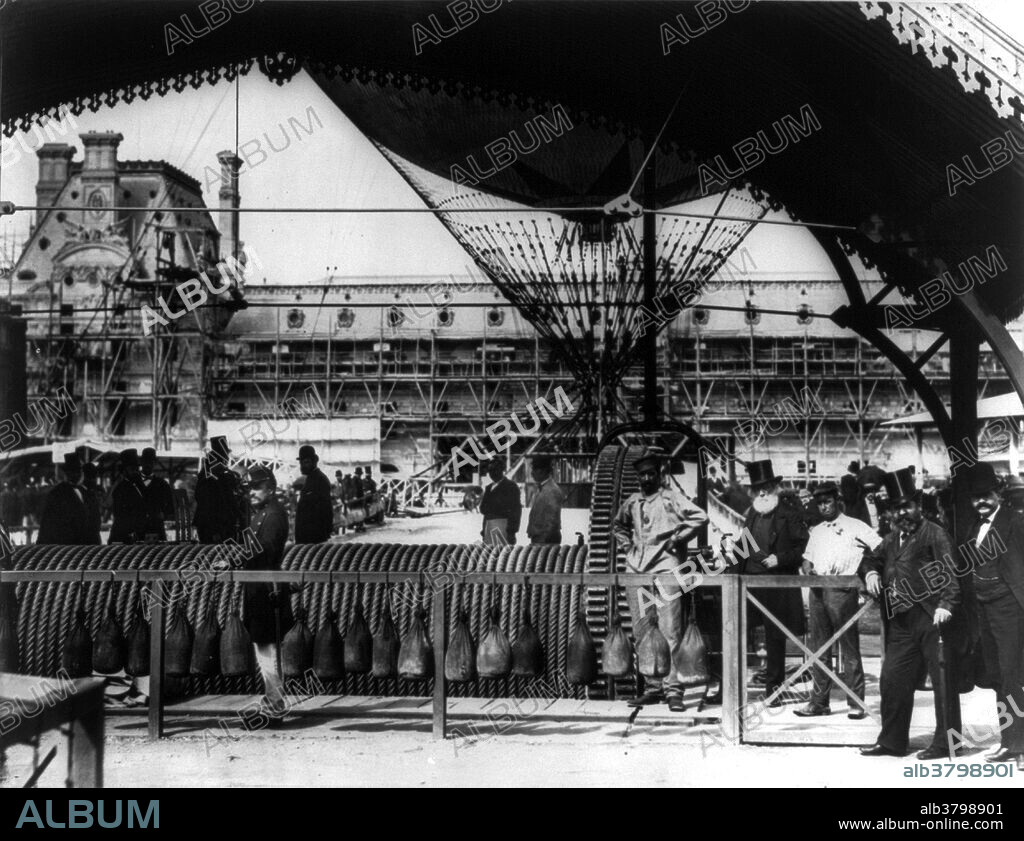alb3798901
Henri Giffard's Captive Balloon, 1878

|
Zu einem anderen Lightbox hinzufügen |
|
Zu einem anderen Lightbox hinzufügen |



Haben Sie bereits ein Konto? Anmelden
Sie haben kein Konto? Registrieren
Dieses Bild kaufen
Titel:
Henri Giffard's Captive Balloon, 1878
Untertitel:
Siehe automatische Übersetzung
Machinery for hauling the giant captive balloon constructed by Henri Giffard, 1878. Henri Giffard (February 8, 1825 - April 14, 1882) was a French engineer. He invented the injector and the Giffard dirigible, an airship powered with a steam engine, and weighing over 400 pounds. It was the world's first passenger airship (then known as a dirigible). Both practical and steerable, the hydrogen-filled airship was equipped with a 3 hp steam engine that drove a propeller. The exhaust steam was mixed in with the combustion gases and it was hoped by these means to stop sparks rising up to the gas bag. He also installed a vertical rudder. On September 24, 1852 he made the first powered and controlled flight traveling over 16 miles from Paris to Trappes. He was able to make turns and circles, proving that a powered airship could be steered and controlled, but it was too slow to be effective. He was granted a patent for the injector in 1858. In 1878, he built a captive spherical balloon with a capacity of 25 liters, and a gondola accommodating 40 passengers. It was used to take aloft visitors at the International Exhibition in Paris. In response to his declining eyesight, he committed suicide in 1882, at the age of 57, leaving his estate to the nation for humanitarian and scientific purposes. His is one of the 72 names of scientists inscribed on the Eiffel Tower.
Bildnachweis:
Album / Science Source / Library of Congress
Freigaben (Releases):
Model: Nein - Eigentum: Nein
Rechtefragen?
Rechtefragen?
Bildgröße:
4500 x 3462 px | 44.6 MB
Druckgröße:
38.1 x 29.3 cm | 15.0 x 11.5 in (300 dpi)
Schlüsselwörter:
AERONAUT • BALLONFAHRER • BERÜHMT • BERÜHMTE PERSÖNLICHKEIT • EUROPAEER (F M) • EUROPAEER • EUROPÄER (F M) • EUROPÄER • EUROPÄISCH • EXPO • FLIEGEND • FLUGMASCHINE • FLUGZEUG • INGENIEUR • LUFTFAHRT • LUFTSCHIFF • LUFTVERKEHR • NOTABEL • PARIS • PERSON • PERSöNLICHKEITEN • PERSÖNLICHKEITEN • PROMINENZ • SCHAUSPIEL • TECHNOLOGIE • WELTAUSSTELLUNG
 Pinterest
Pinterest Twitter
Twitter Facebook
Facebook Link kopieren
Link kopieren Email
Email
